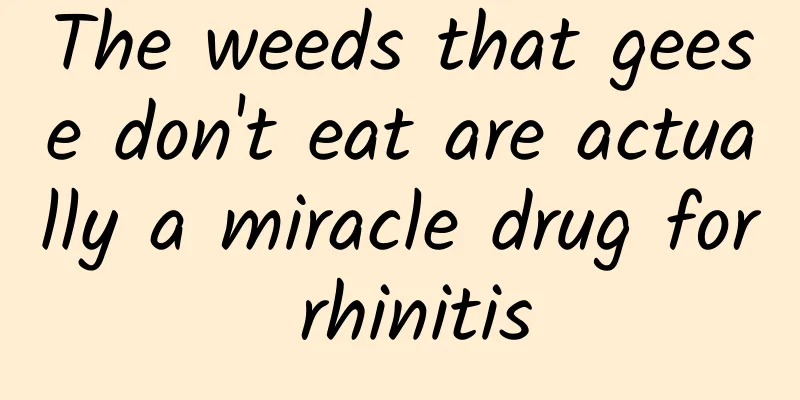The weeds that geese don't eat are actually a miracle drug for rhinitis

|
I remember that when I was young, I suffered from severe rhinitis. I had a long-term nasal congestion and a runny nose. When the nasal discharge flared up, it was very painful. I accidentally saw a herbal medicine in a book that can treat rhinitis. According to the information in the book, I went to the field, washed and crushed the fresh stems and leaves of this Chinese herbal medicine, and stuffed them into my nostrils. With the slight stimulation, I sneezed a few times, and soon my nose was unblocked and tears flowed. Later, I persisted in using it many times, and my rhinitis that had lasted for many years was cured. The herb that cured my rhinitis has a special name: goose-not-eating grass. Why does this Chinese herbal medicine for treating rhinitis have a name related to an animal? There is an interesting legend behind it. According to legend, a long time ago, there was a little boy whose family raised geese. He suffered from a nasal disease. Every day he had yellow purulent nasal discharge, which emitted a bad smell from time to time. He also felt drowsy and his friends all deliberately kept their distance from him. The little boy accidentally discovered a kind of grass that the geese refused to eat. Out of curiosity, he picked up a little and smelled it, and he sneezed several times, and his nasal congestion was relieved. So I insisted on smelling it every day, and over time, the illness was cured. Later, more and more people knew the miraculous uses of this grass and named it "Goose Does Not Eat". Goose does not eat grass, also known as ground coriander, mountain pepper, Erlangji, small Jiujia, and Tongtian Sword. It likes a damp environment and has the effects of dispelling wind, opening the orifices, detoxifying and reducing swelling. According to modern pharmacological research, goose grass has anti-allergic, anti-inflammatory, liver protection, cough relief, anti-asthma, and expectorant effects. In addition to treating rhinitis, goose grass can also treat other diseases. To treat injuries from falls, use 9 grams of goose flesh, add appropriate amount of rice wine and rock sugar, and decoct in water. At the same time, mash the fresh goose grass and apply it to the affected area. To treat thrush, mix goose food and borneol in a ratio of 2:1, grind into fine powder, use a small amount and apply to the affected area. But it should be noted that the amount of goosegrass in the decoction should not exceed 9 grams, otherwise it will easily hurt the stomach. It is not suitable for people with excess heat, blood deficiency and pregnant women. |
<<: A kind of "powder" has thousands of uses! You can throw away all the medicines at home.
>>: This strange "tongue" has three magical effects
Recommend
Sharing washing machines and toilets can actually lead to HPV infection?
Cervical cancer is too cunning. It has a low prof...
The efficacy and function of Qiancaowang
We may get skin diseases due to various reasons i...
If you travel through 4.6 billion years in 24 hours...
From the formation of the Earth to the present Ab...
The efficacy and function of Shenggu oil
Shenggu oil is a very common Chinese medicine in ...
The role of Chinese medicinal licorice
When it comes to the traditional Chinese medicine...
The efficacy and function of Pati fruit
For the Chinese medicinal material such as Pati f...
Although we are in the Milky Way, we know the true face of the Milky Way
Produced by: Science Popularization China Author:...
“Pull out one grey hair and 10 will grow back”, is it true?
White hair always lurks on our heads silently. If...
The efficacy and function of rat tongue grass
Rat tongue grass has a long history, and up to no...
CCTV exposed: The "100% cashmere" in the live broadcast room actually does not contain a single strand of cashmere! Expert interpretation →
Cashmere sweaters are very popular among consumer...
The efficacy and function of rabbit brain
Nowadays, our living standards are constantly imp...
Wake up! “Humans evolved from monkeys” is wrong!
On April 19, 1882, Charles Darwin, a British natu...
The efficacy and function of Tripterygium wilfordii
Tripterygium wilfordii is rich in nutritional val...
The efficacy and function of yellow catfish
As a traditional Chinese medicine, yellow carp pr...
The efficacy and function of horse urine burning
Many people choose horse urine because of its hig...









